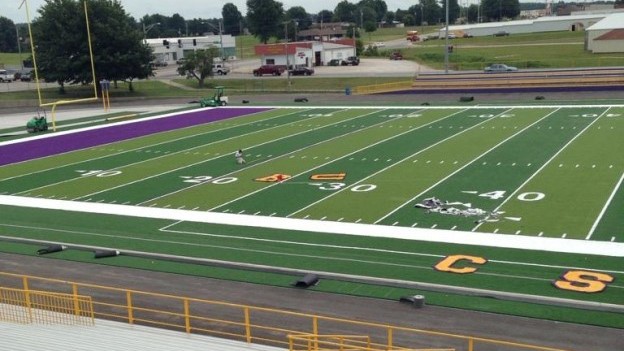A growing awareness of environmental concerns and the urgent need for sustainable practices in various industries is at the forefront of most construction fields. The sports field construction industry, generally associated with large-scale projects and resource-intensive processes, is currently undergoing a major shift towards sustainable practices. Embracing eco-friendly processes presents a wide range of benefits for the industry itself. In this blog, we’ll explore the importance of sustainability in sports field construction and the innovative approaches being adopted to create a greener playing field.
Environmental Impact of Traditional Sports Field Construction:
In general, sports field construction has long been associated with its significant environmental impact. The use of non-renewable resources, excessive water consumption, and construction waste that can contribute to ecological damage. As awareness of these issues has increased, industry leaders are now striving to reduce the environmental footprint of their projects.
Materials Matter: Selecting Sustainable Resources:
One of the key aspects of sustainable sports field construction is material selection. Opting for recycled or renewable resources, such as recycled rubber for synthetic turf or recycled plastic for stadium seating, can help positively reduce the project’s ecological impact. Additionally, the use of environmentally friendly materials not only benefits the planet but also enhances the reputation of sports facilities as socially responsible entities.
Water Conservation and Efficient Irrigation:
Water scarcity is a global concern, making water conservation a top priority in sustainable sports field construction. Implementing advanced irrigation systems with smart water-saving technology, rainwater harvesting, and the use of drought-resistant grass varieties are becoming common practices. These initiatives not only save water but also assist with lower operational costs for sports facilities in the long run.
Energy Efficiency in Lighting and Facilities:
Sports facilities are often equipped with extensive lighting systems for night games and events. Embracing energy-efficient lighting solutions, such as LED technology, not only reduces energy consumption but also lowers operational costs and provides better visibility for players and spectators. Utilizing renewable energy sources, such as solar panels, can further enhance the sustainability of sports facilities.
Certifications and Standards:
Adhering to guidelines and best practices, such as ones established for LEED (Leadership in Energy and Environmental Design) certifications, provides sports facilities with a clear framework for implementing green building practices. Achieving these certifications not only demonstrates a commitment to sustainability but can also attract environmentally conscious sponsors, investors, and events.
Community Engagement and Education:
Creating a sustainable sports facility involves more than just construction practices; it requires a cultural shift within the community. Engaging with local communities and educating stakeholders about the benefits of sustainability fosters a sense of environmental responsibility. This can lead to increased support for eco-friendly initiatives and long-term sustainability efforts.
The sports field construction industry is at a pivotal moment, where sustainability is not just an option but a necessity. By embracing eco-friendly practices, incorporating sustainable materials, and engaging with the community, athletic field contractors can play a significant role in mitigating environmental impact. The move towards sustainability not only benefits the planet but also positions sports facilities as leaders in responsible construction practices, setting the stage for a greener and more sustainable future in the world of sports.





